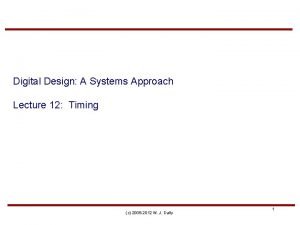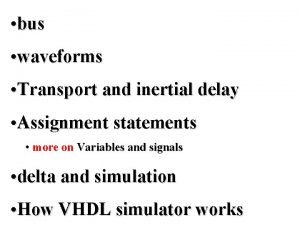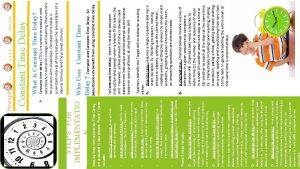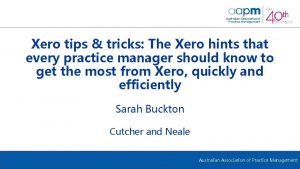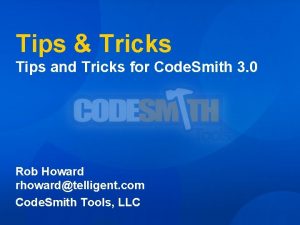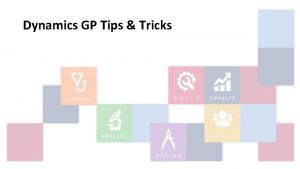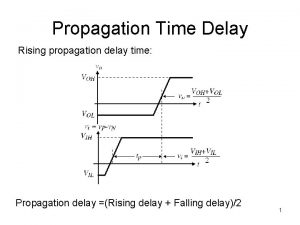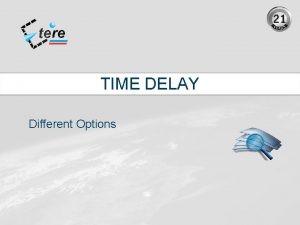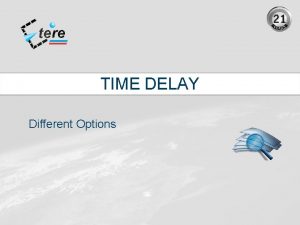CONSTANT TIME DELAY Olivia Pitchford Tips and Tricks






- Slides: 6

CONSTANT TIME DELAY Olivia Pitchford Tips and Tricks Video

What is Constant Time Delay? • Time delay is a practice that focuses on fading the use of prompts during instructional activities while also delivering reinforcement to increase the likelihood that target skills/behaviors will be used in the future. • Time delay is an evidence-based research practice that allows teachers and other practitioners to gradually increase the waiting time between an instruction and any prompts that might be used to elicit a response from a learner. With constant time delay, there is no delay between the instruction and prompt when a learner is first learning a skill. However, with constant time delay, a fixed amount of time is always used between the instruction and the prompt as the learner becomes more proficient at using the new skill. • With the constant time delay procedure, the controlling prompt is delayed for a fixed number of seconds (usually 3, 4, or 5). These trials are used until the learner with ASD masters the skill.

How to perform CTD • Give an attention cue to make sure student is ready to work • Present the task ( in this case it was a number) • Wait for a response for the fixed time your have determined (3 or 5 seconds) • Based on response, give appropriate consequence • If it is correct, reinforce by saying “good job, you said ____!” • If they do not respond, respond by saying I don’t know you immediately give them the correct answer and have them repeat it. • If they respond incorrectly, remind them to wait if they do not know the answer and you will give to them (errorless learning) • Record your data appropriately • + for correct, - for incorrect, NO for no response

What will I need to perform CTD? Here I have my CTD data sheet and the numbers I’m teaching the student. That’s the best part about this. You don’t need a lot of materials, you are focusing on teaching what is called a “discrete task” and collecting data based on the student’s response.

R. G Identifies Number’s 11 -15 • I first took a baseline to see what my student knew and then I performed something called “ 0 -second” delay. 0 -sec. is used as a drill and practice technique to teach the student the desired skills. After about 3 -5 sessions of 0 -sec, I will begin using a 3 second delay based on this student’s learning behavior. His goal is to id numbers with 100 % accuracy in 3 consecutive trials. • This particular student was able to learn 110 using CTD. He is now able to id them with 100% accuracy in both probe sessions and generalized settings. • See Video (in email)

Benefits of Using CTD • CTD is not only an effective, research based practice for students with disabilities, it is also effective for any student when learning concrete discrete tasks such as spelling words, numbers, capital/state identification, colors, etc. • It is easy to learn and teach others • The goal of CTD is to increase the likelihood that the learner with a disability will use the target skill/behavior again in the future. • Feel free to check out articles or videos about time delay online!
